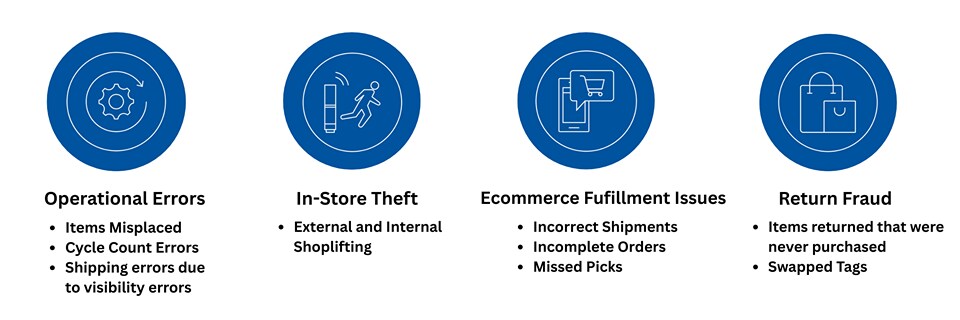Article
Good Data In, Good Data Out: The True Value of Source Tagging Compliance

In today’s retail landscape—characterized by high customer expectations and thin operating margins—inventory accuracy is not just a luxury; it’s essential. Yet, billions are lost each year due to avoidable item loss from theft, misplacement, or fulfillment errors, leading to lost revenue, operational disruption, and damaged customer trust.
RFID technology offers a solution, but the key lies not only in applying RFID tags but also in ensuring that every item is tagged properly, consistently, and compliantly. This is where RFID tagging compliance becomes critical.
The Real Cost of Item Loss

Without end-to-end visibility into item locations and their flow through the supply chain, these issues escalate. RFID can address this challenge, but only when implemented with compliance in mind.
Where RFID Tagging Comes into Play
RFID transforms each item into a traceable, intelligent asset. Unlike barcodes, RFID tags can be read in bulk and without line of sight, enabling near real-time inventory visibility. However, this capability depends on tagging quality and consistency. Using the wrong tag, misplacing it, or encoding it incorrectly undermines visibility and allows item loss to persist undetected.
The RFID Tagging Compliance Checklist
A compliant RFID tagging program enhances inventory accuracy, streamlines cycle counting, and boosts customer satisfaction. It addresses tagging exceptions, eliminates ghost inventory, and ensures compliance in distribution centers while validating returns and reducing losses through advanced analytics. Given that a 10–15% non-compliance rate in tagging can severely undermine inventory accuracy and audit results, tagging compliance is essential. We’ve developed a practical checklist used by leading retailers to help you create a compliant, loss-resistant RFID tagging program:
☑Source Tagging Verification
- Are all items tagged at the point of manufacture or at the distribution center?
- Is the tag type optimized for the item’s material and packaging?
- Is placement consistent and easily readable?
☑Encoding Standards
- Are EPCs (Electronic Product Codes) unique and standardized?
- Is serialized data encoded correctly and verified?
- Are encoding errors flagged before items ship?
☑Tag Placement Compliance
- Are tags placed in recommended locations for optimal readability?
- Are store associates trained to identify improperly tagged items?
- Are vendors adhering to placement SOPs?
☑Read Performance Testing
- Are read rates at key checkpoints (receiving, outbound, POS) meeting required thresholds?
- Are exceptions investigated and resolved promptly?
☑Exception Tagging Protocols
- Are there clear workflows for tagging untagged items, especially returns?
- Are loss prevention, operations, and merchandising aligned on exception handling?
☑Outbound Audit Stations
- Are shipments verified at the item level before leaving the facility?
- Are RFID reads used to generate proof-of-delivery reports?
- Are error rates tracked to prevent chargebacks?
☑Monitoring & Feedback Loop
- Are non-compliant vendors flagged and followed up with?
- Is compliance performance included in ongoing KPI reporting?
Tagging forms the foundation of every RFID program. If your tags are incorrect, your data will be unreliable, leading to poor business decisions. Conversely, when done correctly, RFID tagging compliance becomes your strongest line of defense against loss, inaccuracy, and inefficiency.
Ready to eliminate chargebacks, reduce shrink, and build trust with both stores and partners? Start with your tagging.
Get started today: RFID Retail Loss Stops Here

